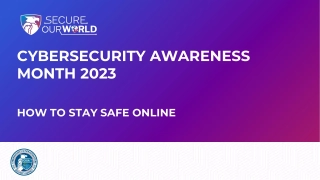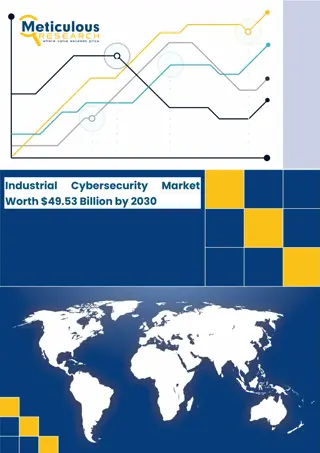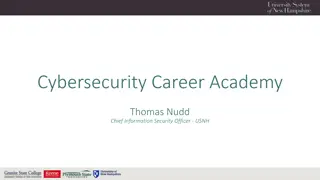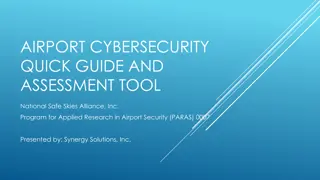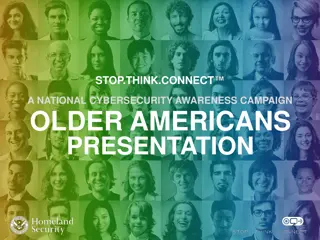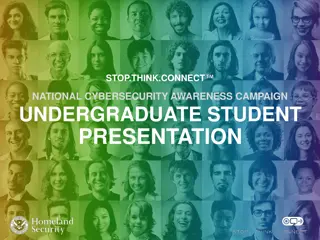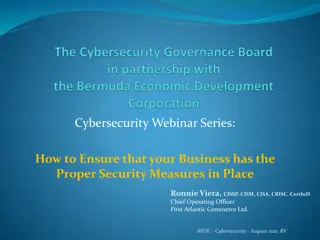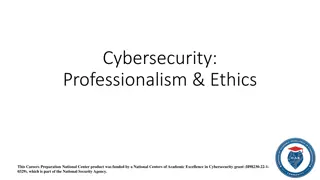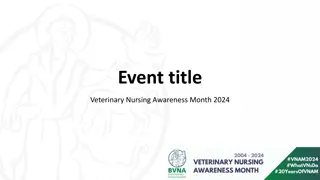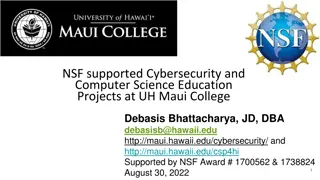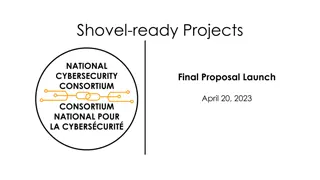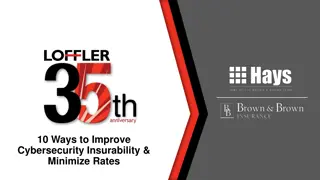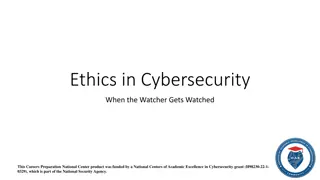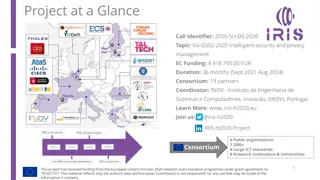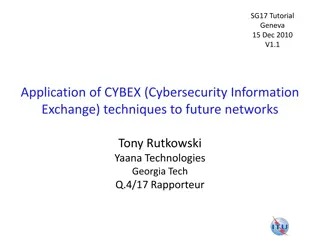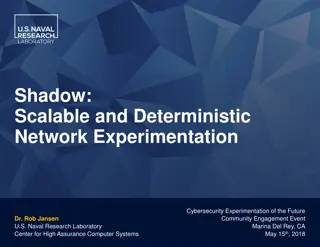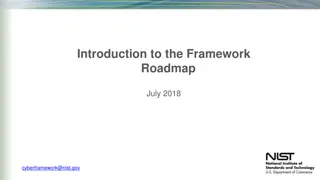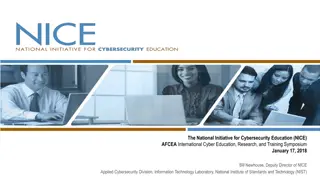Cybersecurity Awareness Month: Stay Safe Online
October is Cybersecurity Awareness Month, highlighting the importance of cybersecurity in safeguarding computer systems and personal information from cyber threats. Learn about cybersecurity practices, the significance of strong passwords and a password manager, and how to use multifactor authentication to enhance online security.
Download Presentation

Please find below an Image/Link to download the presentation.
The content on the website is provided AS IS for your information and personal use only. It may not be sold, licensed, or shared on other websites without obtaining consent from the author.If you encounter any issues during the download, it is possible that the publisher has removed the file from their server.
You are allowed to download the files provided on this website for personal or commercial use, subject to the condition that they are used lawfully. All files are the property of their respective owners.
The content on the website is provided AS IS for your information and personal use only. It may not be sold, licensed, or shared on other websites without obtaining consent from the author.
E N D
Presentation Transcript
CYBERSECURITY AWARENESS MONTH How to Stay Safe Online
October is Cybersecurity Awareness Month
What is Cybersecurity? Defined as "the protection of computer systems and networks from attacks by malicious actors that may result in unauthorized information disclosure, theft of, or damage to hardware, software, or data..." Wherever there is technology, there needs to be cybersecurity.
Why is it Important? Implementing cybersecurity best practices is important for individuals as well as organizations of all sizes to protect personal, financial and sensitive information. For both government and private entities, developing and implementing tailored cybersecurity plans and processes is key to protecting and maintaining business operations.
4 Easy Ways to Stay Safe Online Use Strong Passwords and a Password Manager Turn on Multifactor Authentication Recognize and Report Phishing Attacks Update Your Software
Use Strong Passwords CREATE STRONG PASSWORDS: Long At least 16 characters Unique NEVER reuse passwords Random Upper- and lower-case letters Numbers Special characters Spaces Consider pass-phrases
Use a Password Manager WHY USE A PASSWORD MANAGER? Stores your passwords Alerts you of duplicate passwords Generates strong new passwords Some automatically fill your login credentials into website to make sign-in easy It won't fall for a phishing website, even if you do! Encryption ensures that password managers never "know" what your passwords are, keeping them safe from cyber attacks.
Turn on Multifactor Authentication WHAT IS IT? A code sent to your phone or email An authenticator app A security key Biometrics Fingerprint Facial recognition
Turn on Multifactor Authentication WHERE SHOULD YOU USE IT? Email Accounts with financial information Ex: Online store Accounts with personal information Ex: Social media
Recognize and Report Phishing A tone that s urgent or makes you scared Ex: "Click this link immediately or your account will be closed" PHISHING RED FLAGS: Sender email address doesn t match the company it s coming from Ex: Amazon.com vs. Amaz0n.com Unexpected communications such as an email you weren't expecting Requests to send personal info Legitimate organizations don't ask for personal information through email or an unexpected call. Misspelled words, bad grammar and odd URLs can still be a sign of phishing. Be aware that AI will make spotting these more challenging. Be diligent.
Recognize and Report Phishing WHAT TO DO IF YOU SPOT A PHISH Do Do NOT Verify that the communication is real and contact sender directly through known phone numbers or emails. Report it to your IT department or email/phone provider. Use email filters Don't click any links you don t trust. Delete the email/text. Don't click any attachments you were not expecting or recognize. Don't send personal info online or share over the phone. Many email services have filters that can help prevent many phishing messages from ever reaching your employees mailboxes. DELETE IT.
Update Your Software WHY? Updates ensure your devices and apps are protected from the latest threats Don't click "remind me later", it could leave you vulnerable to cyber threats Automatic updates are the easiest way to stay secure
Update Your Software WHERE TO FIND AVAILABLE UPDATES Check for notifications to your phone or computer Look in your phone, browser or app settings Check the upper corner of your browser for any alerts
Additional Resources CISA NCA Report a Cyber Issue Resources and Guides Secure by Design Videos and On-Demand Webinars Cross-Sector Cybersecurity Performance Goals Cyber Resource Hub Cybersecurity Training & Exercises CISA YouTube Channel
Get in Touch CISA cisa.gov/cybersecurity-awareness-month AwarenessCampaigns@cisa.dhs.gov NCA staysafeonline.org info@staysafeonline.org


